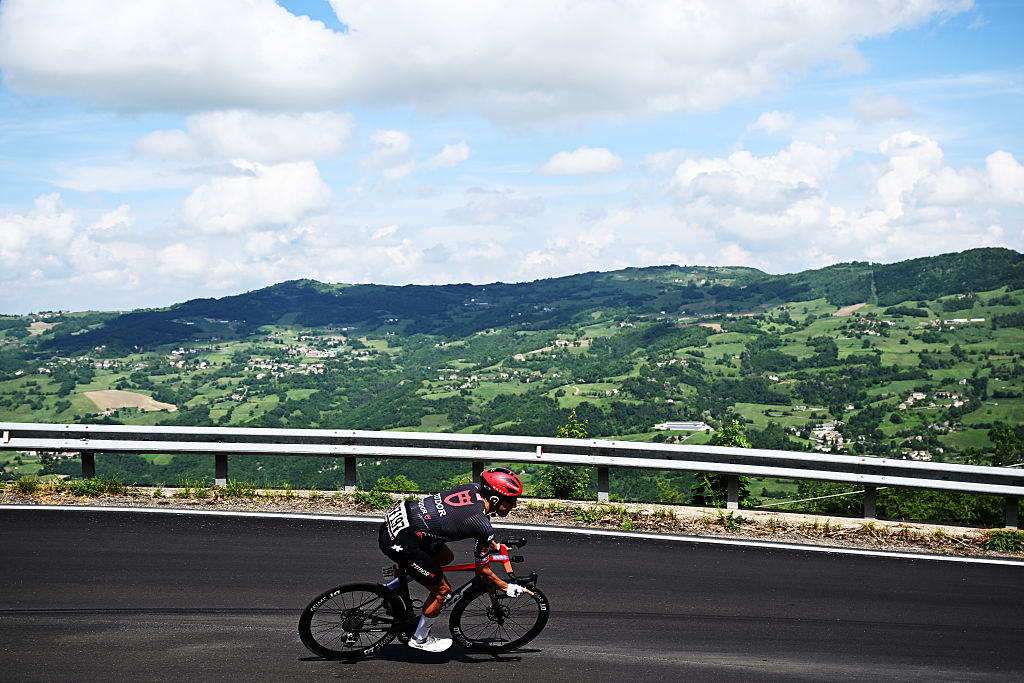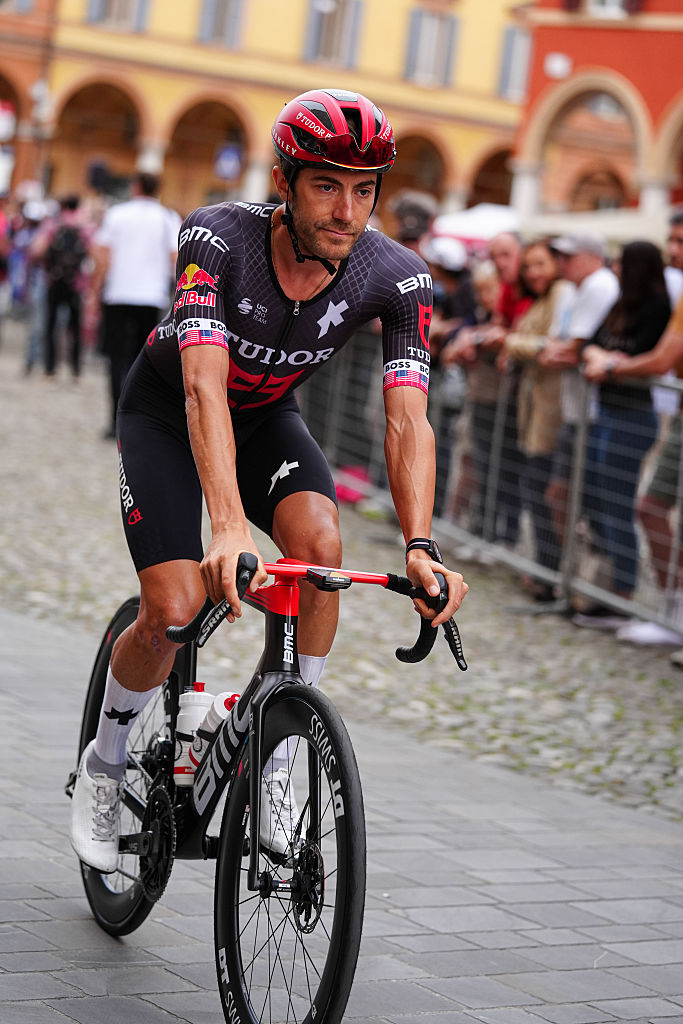
“La corsa più dura del mondo nel paese più bello del mondo!” The phrase that rings over the loudspeaker each morning always makes me smile. It means “the hardest race in the world in the most beautiful country in the world.”
While it’s quite the superlative, it’s probably not far off the truth. Italy is one darn beautiful country, with its varying landscapes, and the Giro d'Italia is one damn hard race.
The last week at the race has been an interesting one, without a ton of crazy action to write home about, but even lacking a “Queen stage,” there was no lack of intensity. I’ve heard a bit of discussion on the course design, with this Giro’s heavily weighted final week leaving all of the suspense for the last few days, it’s tough to say what design is "better."
It’s also sometimes hard to be objective when you are in the race, as I can tell you, the most exciting races to watch on TV are not always the most enjoyable to races to ride… unless you have the legs of a certain Tadej Pogacar.
But so far, I’d say this Giro is somewhere in between - intense every day, without a death march of a stage where the whole peloton finishes on their hands and knees. I’m sure those days are yet to come this next week.
The age of the attack
One thing I am certain of is that the style of “modern cycling” as we like to call it, is ever-changing. Gone are the days of a slowly increasing tempo over the day, before a full gas final climb to the finish. No, now, we never know where or when we will go to our maximum.
Where it used to rarely happen before the last 20km, now it could be 50, 80, 120km from the line. This week, it seems that the old adage of saving, saving, saving in a Grand Tour seemed to be thrown out the window, with GC riders attacking on all types of stages, and the classification changing the most on days we least expect it!
One such stage was two days ago in Nova Gorica in Slovenia. We seemed set for a challenging sprint finish, with a couple of short climbs before the technical finishing circuit and then a kicker to sap the legs each lap before the line.
We were looking for a good result for our sprinter, Maikel Zijlaard, and we made it over the hills in good position, before entering the slippery circuit. One moment to the next, when we changed from pavement to small cobbles, the entire Lidl-Trek team went down.

They also happened to crash on the narrowest part of the circuit, making it very difficult to get through. I was lucky enough to be able to brake and dismount my bike, but as I passed through, I couldn’t help but get distracted by the carnage. I could see Giulio Ciccone crawling from the middle of the road to the sidewalk, grimacing in pain, trying to get out of the way of the rest of the riders. The image stayed with me, the picture of his agony burned into my brain. It’s kind of crazy when you think about it, you see some of your comrades from the peloton lying on the ground, sometimes in critical condition, and we just have to keep fighting. Imagine if you did that to your coworker?
My slight distraction meant I ended up in the group just behind Michael Storer (our GC rider), and seeing as I happened to be with a few riders ahead of him on the GC, I couldn’t take a pull. But what’s crazy to see is the group’s appetite for risk change from one corner to the next - after that crash, we went through each corner on the circuit as if we were riding unicycles on ice… It’s quite the sight. It’s something that always makes me laugh, as if you corner well in the dry, the technique shouldn’t change much in the wet. But I get the impression that as soon as the road glistens with raindrops, half of the peloton seems to believe that it’s their shoulders that turn the bike! It has happened to me before as well, but I’m not sure at what point we feel the need to turn into rolling Frankensteins because of wet roads.
To tell you the truth, I’ve even been known to do the same thing when driving my car as soon as the rain starts to fall…
The athlete's diet
Looking towards the coming stages, we have some huge mountains on the horizon. With the changing terrain, going from flatter stages and more rolling hills to the pure climbs, another thing we change is our diet.
At the beginning of the race, we opt for a more normal type of diet, with salad, veggies, or fruit smoothies to accompany our usual meals of pasta, rice, and oatmeal. A generally “healthy” diet, I think it could be considered. High in carbs, reasonably high in protein, relatively low in fat. But as we get closer to the mountains, this begins to change.

First, we get rid of the salad, the raw veggies, or maybe the pieces of fruit you might have as a snack. Next goes the cooked vegetables, anything that could slow digestion or add a bit of added bulk to the gut. Then it’s the porridge, as it is also quite high in fibre. And at the end, there’s not much left to eat. Just colourless, soulless fuel. White rice. White chicken. White fish. Rice Krispies, Corn Flakes, Coco Pops.
The only bit of colour on the menu might be the juice we drink to reach our carb quota in the morning. It can be grim, but it works.
The low fibre, or low bulk diet, is something that has become rather ubiquitous in professional cycling over the last number of years, as you can drop “unnecessary” weight before the critical mountain days. As a lover of food, of salads, of all things veggies and fruit, it’s a sad existence, but this endurance athlete’s version of a little kid’s diet works. You can lose around a kilogram in just a few days.
But for now, since I can’t enjoy my food all that much, it’s time to enjoy the other little things on the last moments of my rest day. This time, we got quite lucky to be at a spa hotel and resort. I took advantage of the thermal baths with a brief dip in the afternoon, although I was the only rider on the team to do so! I figure if this is where the general public comes for some rest and relaxation, why not me too? It’s gotta be good for the muscles. The day was just what I needed to be ready and raring to go.
I think it’s safe to say that the next week will be one of the biggest of most of our lives. I have a feeling the race will live up to the announcer’s phrase this week, with lots of suffering, but also lots of scenery. So then, I’m guessing, it will be great to watch.







